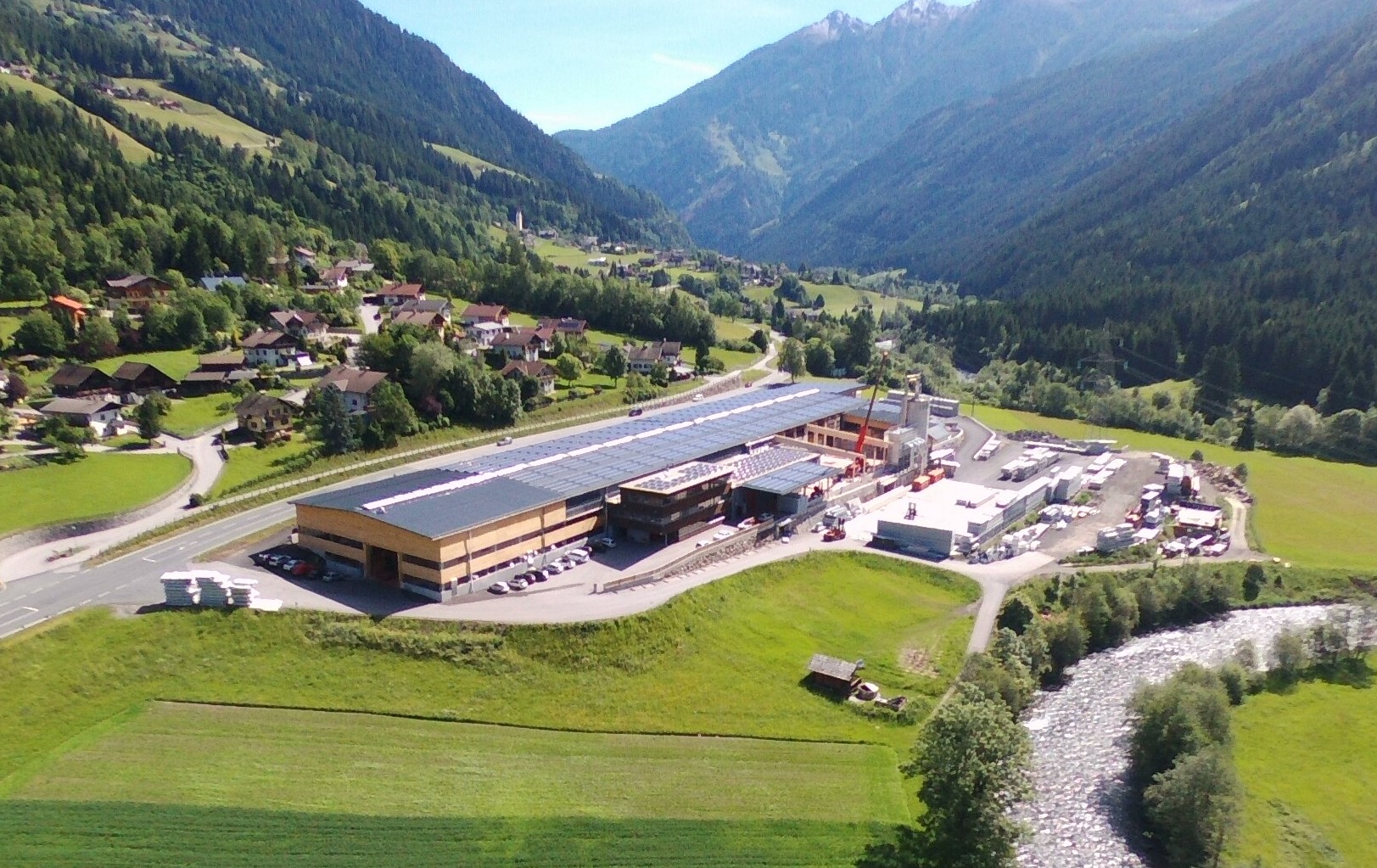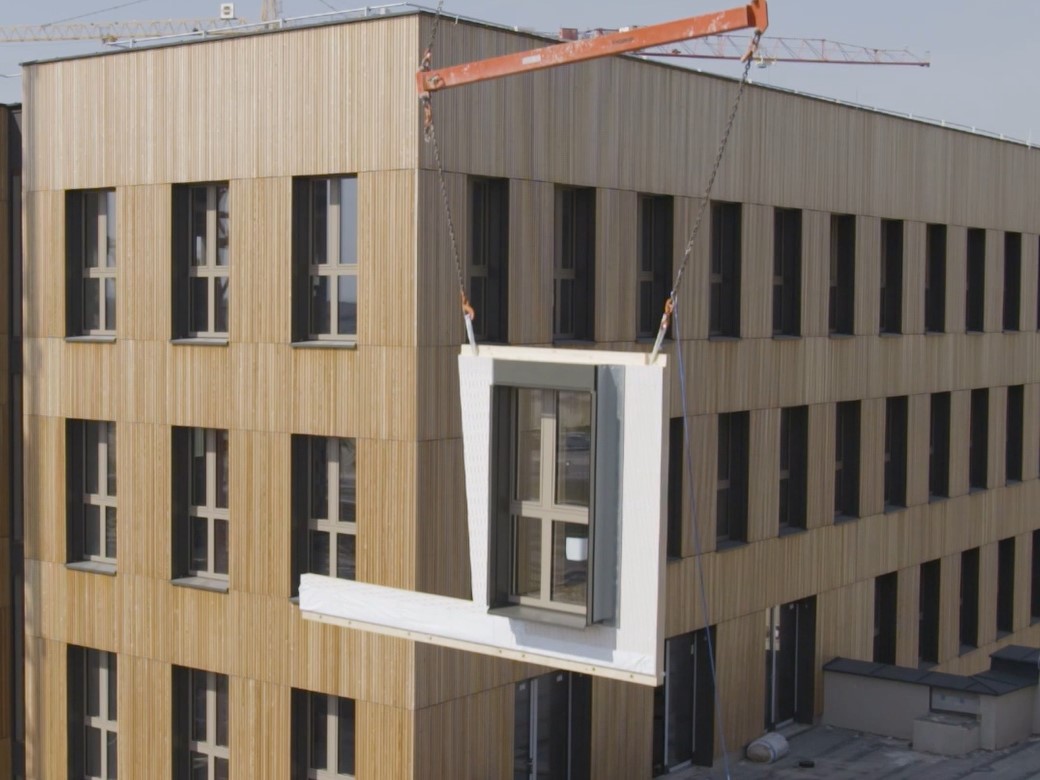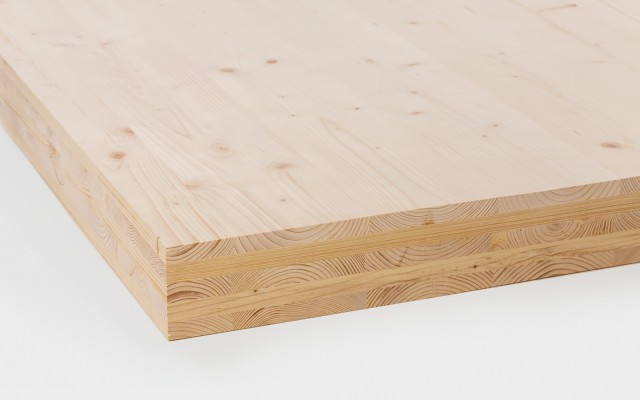
Hasslacher
- Standard: Puro.Earth*
- Methodology: Bio based construction
- Credit Type: CORC
- Facility ID: 643002406801000534
- Location: Austria
- Year of first issuance: 2022
- Status: Audited
- Audited by: bio.inspecta
- Spot Inventory: Yes
- Forward Inventory: Yes
Description
NORITEC Holzindustrie GmbH is a subsidiary of the HASSLACHER Group, one of Europe's leading timber groups. Stall im Mölltal is one of several facilities that produce Cross Laminated Timber in the HASSLACHER Group. The facility produces approximately 70 000 m3 of finished CLT products per year.
CLT is a recent innovation in the timber industry. It was first developed in Austria. CLT is a wood panel product made from glueing together layers of solid-sawn lumber. Each layer of boards is usually oriented perpendicular to adjacent layers. By gluing layers of wood at right angles, the panel can achieve better structural rigidity in both directions. Because of CLT's structural properties, and its ability to be prefabricated and low weight, CLT can be used in mid-rise and high-rise buildings, often as a replacement for concrete elements with similar durability. Further advantages are the very good insulation properties and the high mechanical performance together with a low density.
NORITEC uses 100 % FSC or PEFC timber. Timber products from sustainable forestry can be considered renewable. NORITEC has a valid Environmental Product Declaration for CLT. Environmental Production Declarations (EPDs) provide a basis for informed decision-making about the environmental attributes of products. The EPD shows that each cubic meter (m3) of CLT board stores 585 kg of CO2 that the tree absorbed from the atmosphere during its growth period. All emissions from the harvesting of the timber, transport to the production facility, and through to the production and packaging of the products were accounted for in accordance with the Puro methodology.
The baseline scenario for commercial buildings is the use of reinforced concrete elements which have a heavy CO2 footprint. Under the activity penetration threshold of 5%, all load-bearing engineered wooden elements of this type are considered to be additional. The Puro methodology for bio-based construction guarantees a minimum 50-year duration of CO2 removal and storage.
Application
Office buildings, hotels, apartments, schools, sport facilities, multi-story car parks, primarily in Europe, but also in USA.
Co-benefits
- Replacement of concrete and steel in the construction industry, both of which have heavy greenhouse gas footprints.
- Better air. Wooden buildings "breathe" better than traditional structures offering benefits to the occupants of the buildings.
- Harvesting and managing forests sustainably decrease the risk of forest fires, insects, and diseases.
- Clean energy - a bi-product of CLT production are used for bioenergy, displacing fossil fuels in the electricity mix.
Emissions avoidance
The Puro Earth methodology describes CO2 removals, or drawdown of emissions, not emissions reductions or avoidance. The 585 kg/m3 of CO2e is a removal, NOT an avoided emission. Avoided emissions from the use of their products are primarily created by substituting concrete and steel in buildings. For comparison, 1 m3 of timber product from NORITEC removes 585 kg/m3, whereas a comparable reinforced concrete beam has a footprint in excess of 330 kg/m3. Such avoided emissions avoidance are additional to the CO2 that gets removed by NORITEC's products.
Additionality
Despite all its benefits, engineered timber has a very low market share compared to concrete and steel constructions. The income from the sale of CORCs allows NORITEC to be more competitive and win more tenders, further increasing the share of CLT boards in buildings in relation to concrete or other less sustainable products. The CORCs also bring much-needed attention to CLT as a climate solution.
*Puro.Earth discontinued issuance of Bio-based construction credits in 2023.


